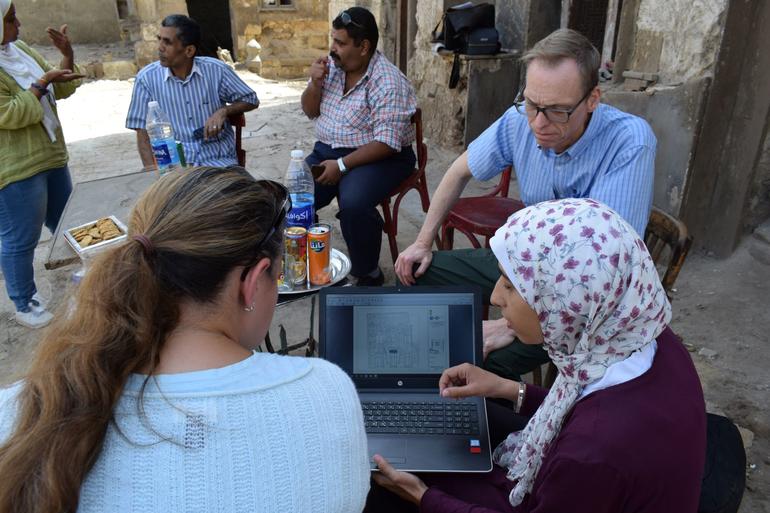
Heba Badr
MY ROLE: Architect at Takiyyat Ibrahim al-Gulshani in Cairo, Egypt
MY WORK: I believe that saving heritage requires a collective mobilization of people. So in my master’s thesis research I have pointed to the importance of having a participatory process, and as a GIS specialist, developing a geographic information platform. There, communities can easily monitor heritage sites according to their geographic location, quickly report unlawful actions, or suggest adding buildings that they see as significant. In the future I hope I can find a way to incorporate these concepts into the Takiyyat Ibrahim al-Gulshani and its environment.
EMPOWERING WOMEN: Women are half of the population, and they should have the same rights as men to be involved in all fields of work. Women have passion in what they are doing, and that kind of emotional connection means they have patience to see their efforts through adversity. Passion also seeds a desire for knowledge, and that builds an appreciation for something. It also grows curiosity—the quest to discover the past is part of that.
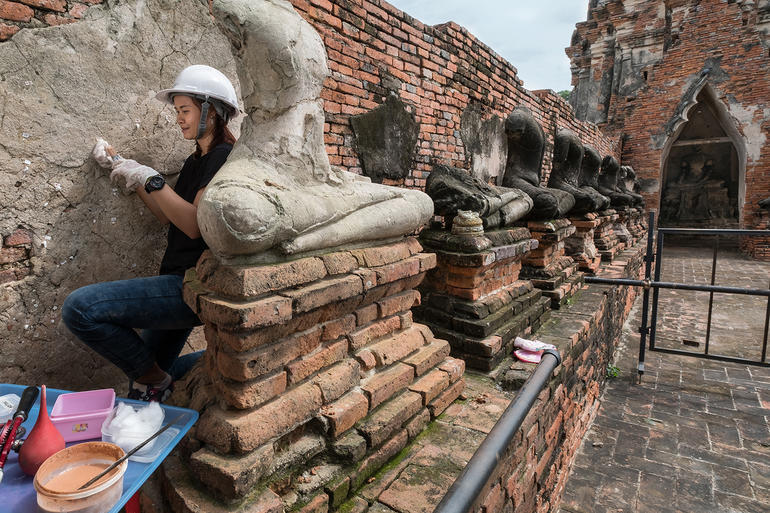
Natkhanop Prachayanitipat
MY ROLE: Conservator at Wat Chaiwatthanaram in Ayutthaya, Thailand
MY WORK: My greatest and proudest accomplishment is working at Wat Chaiwatthanaram with World Monuments Fund, because it was my first job as a conservation trainee. It’s a kind of freedom of expression through work, and at the same time a sense of accomplishment through preserving something irreplaceable. You don’t find that in many jobs. It is challenging fighting back the destruction of time—I do battle everyday with decay!
EMPOWERING WOMEN: Preservation needs more women because of our careful nature and our tendency to not want to put off issues in need. I am fortunate to work with great female role models with loads of experience in conservation whose patience point me in the right direction, including chief conservator Josephine D’Ilario, and master mason extraordinaire Mali Choomchooboon. Together they are leading me to be a great conservator. I encourage every woman to try preservation and feel the love for your work that we have.

Thandar Phyo
MY ROLE: Conservator at Shwe-nandaw Kyaung in Mandalay, Myanmar
MY WORK: There are many challenges to our work—perhaps the most interesting involves reviving the historic standards in Burmese woodcarvings. The quality of craftsmanship declined during the period of economic sanctions when many young carvers found no work and quit the business or jumped to the Chinese furniture market. We are working to reverse this trend by reviving appreciation for my country’s traditional crafts and creating a new group of people with the skills to take care of Shwe-nandaw Kyaung and other monuments according to international standards.
EMPOWERING WOMEN: Women are more than fifty percent of Myanmar’s population, but for far too long we have not had an equal contribution in many fields. Preservation is a progressive line of work where young Burmese are the future. Exposure to international standards and training is showing a new way to open minds, and in doing so can save our heritage, which is increasingly under pressure from rapid economic development. To compete on many levels, my country’s future will rely on women taking a more active role in saving our heritage.
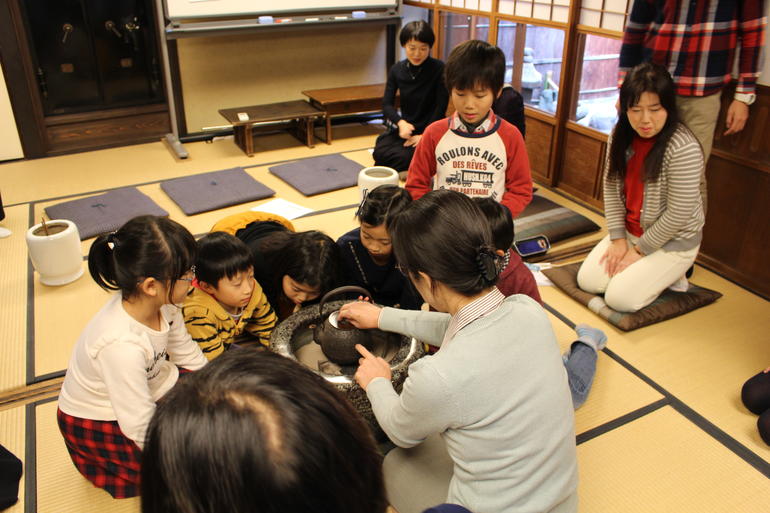
Fusae Kojima
MY ROLE: Member of the Kyomachiya Council in Kyoto, Japan
MY WORK: I first encountered kyomachiya, traditional wooden townhouses in Kyoto, when I got married and started living in one. Living in an old house in a community that had been facing rapid modernization, I came to question if these drastic changes and challenges were the right thing. I myself faced such issues as inheritance tax and maintenance difficulties. In 1992, Kyomachiya Council was created to share concerns over the diminishing traditional cityscape and architecture of Kyoto. I have been a part of the council’s activities ever since. We are currently undertaking the first Kyomachiya Revitalization Project with support from World Monuments Fund.
EMPOWERING WOMEN: Without views deeply rooted in everyday living, we cannot revitalize a building. The power of women is indispensable for true action.
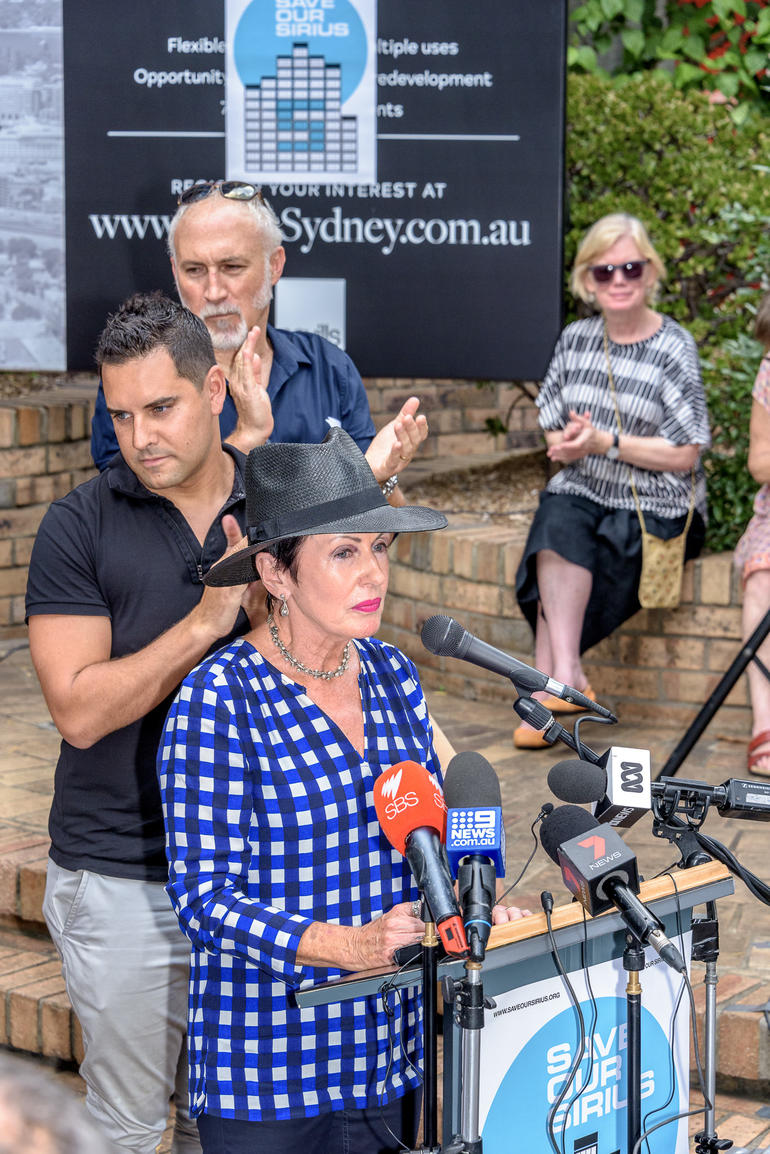
Lord Mayor Clover Moore
MY ROLE: Lord Mayor of Sydney, Australia, and advocate for the Sirius Building in Sydney, Australia
MY WORK: In March 2014, the NSW Minister for Family and Community Services, Pru Goward, made the outrageous announcement that the NSW Government planned to sell off the Sirius building, with its 79 apartments, affecting around 400 residents. A further 293 social housing dwellings in the surrounding inner city area known as Millers Point were to be sold as well. As Lord Mayor of Sydney, I immediately condemned the announcement, which was made with no consultation and no consideration of how it would affect the close-knit community in this part of Sydney. I joined the campaign to defend the rights of social housing residents, who should be allowed to live in the inner city. In 2016, when the same NSW Government ignored its own heritage advice and refused to heritage list the iconic brutalist building, I became an Ambassador for Sirius for the community-led group, Save Our Sirius.
EMPOWERING WOMEN: Women can make great community leaders, with their caring approach and interest in their communities, plus they have the organisational abilities and resilience to plan and see things through. My own career in politics began with a grassroots campaign – standing up to the local government and demanding a better local park, as well as measures to reduce congestion on local streets. I encourage more women to get involved in their local communities and to fight for the issues that matter most to them. I would also like to recognise the dedication of a number of women who have been involved in the fight to save Sirius, including Myra Demetriou, the last resident to be evicted from Sirius, Blue Lucine and Helen Barrow, who have followed the campaign throughout, and Margaret Bishop, who has been a key campaigner and organiser in the fight to save Sirius and Millers Point.
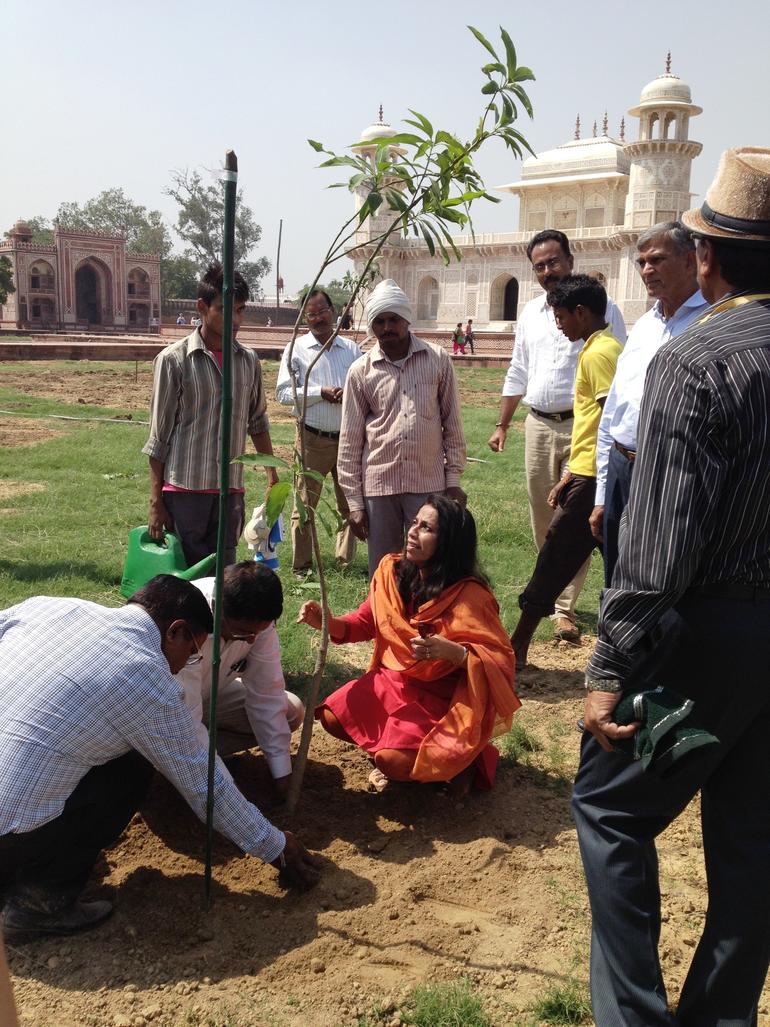
Annabel Lopez
MY ROLE: Project Management Consultant for the Mughal Riverfront Gardens of Agra in Agra, India
MY WORK: If you look carefully, each heritage building shows evidence of the dynasties that have influenced its architecture and the occupants that that have left their mark on the buildings. A number of stories have been packed into the building, giving it a life of its own. It is unravelling these stories and then ensuring that the buildings stand the test of time, to continue telling their story that makes heritage conservation so rewarding. My most rewarding project is perhaps the recently concluded Mughal Riverfront Gardens of Agra. It is the very first time that a Mughal charbagh has been restored in its entirety. Today when I walk into the restored charbagh, the Mughal species that were nurtured for almost three years are showing signs of thriving and are now in full bloom. The ripple of gently flowing water in the restored water channels and the butterflies and birds that are drawn by the fragrance and color make the years of getting the project off the ground all seem worth it!
EMPOWERING WOMEN: Although architecture and the building sciences are largely male dominated professions, in India, the conservation fraternity is largely dominated by women. This tipping of the scales in favour of women, I hope, continues. There is enough research that demonstrates that involving more women in conservation projects is the key to the project’s success. Perhaps a conservation project inherently requires patience, attention to details and care, which comes more easily to women. And I am not referring here, to just the conservation professionals leading a conservation project, but even more so, the involvement of women from the community that is host to heritage. It is critical that involvement is required across both genders, in order to get a holistic outcome for a project and a sustainable environment in the long run.
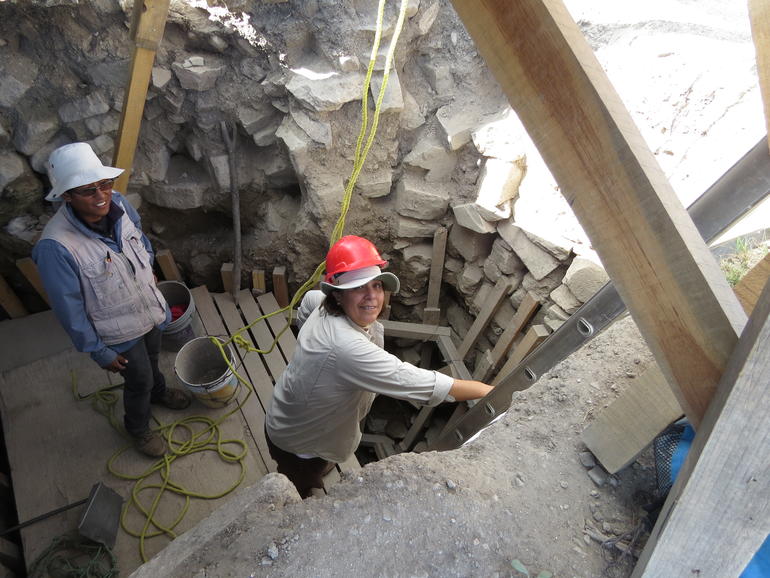
Dr. Nelly M. Robles Garcia
MY ROLE: Director of the Archaeology and Conservation Projects at the Atzompa Monumental Zone in Oaxaca, Mexico
MY WORK: Writing and executing the first management plan for the Monte Albán archaeological zone in Mexico between 1998 and 2010 was the most exciting and fulfilling experience in my professional life. The many pillars that are required of a management plan allowed us to rapidly respond to the September 1999 earthquake that devastated Oaxaca and collapsed 21 archaeological structures in Monte Albán. Due to the professional organization in place at the site, it was possible to conduct one of the most important restoration projects that has ever taken place at Monte Albán.
EMPOWERING WOMEN: I believe more visibility of the women already working in different projects in conservation and archaeology is necessary. Women’s innate abilities to organize teams and fully commit from beginning to end in every project needs to be recognized by future generations as best practices in the conservation field.
